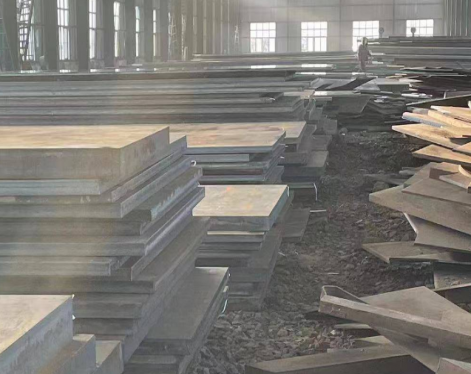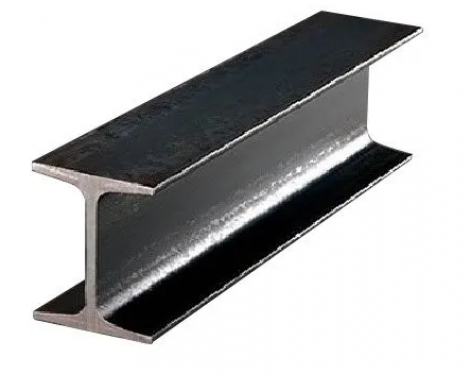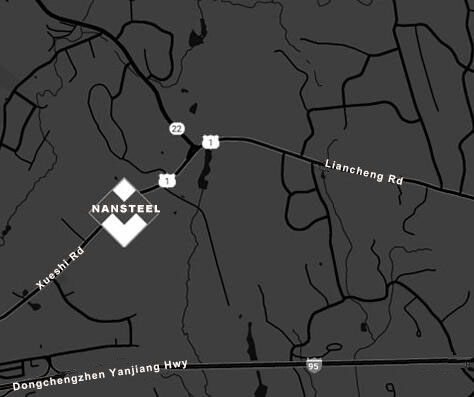Advantages of carbon steel plate:
1. High strength: The strength of carbon steel plate is relatively high, which can meet the requirements of many projects with high strength requirements.
2. Wear resistance: The surface hardness of carbon steel plate is high, and the wear resistance is good. It can reduce surface wear and fatigue cracks during use. After heat treatment, the hardness and wear resistance can be improved.
3. Good toughness: Carbon steel plate has excellent toughness, is not easy to deform or break when subjected to force, and has good plasticity and impact toughness.
4. Easy to process: Carbon steel plate is easy to process, cut, weld and form, and can meet various needs of engineering processing.
5. Low price: Compared with other special steels, the price of carbon steel plate is more economical and affordable, and it is easy to mass produce and use on a large scale. Its raw materials are common, so it is easy to find, so the production cost is not high.

Disadvantages of carbon steel plate:
1. Easy to corrode and rust
Carbon steel plate is a kind of steel containing a large amount of carbon element. Carbon element easily reacts chemically with water in oxygen and water vapor in air, causing the surface of steel plate to rust. Especially in a humid environment, the surface of steel is more prone to corrosion and rust.
2. Low durability
Carbon steel plates are relatively fragile and easily deformed or damaged by the external environment. During long-term use, fatigue is prone to occur, resulting in cracks and fractures.
3. Easy to deform
Due to the high hardness of carbon steel plates, deformation is prone to occur. During processing or assembly, if the heating and cooling processes are not properly controlled, the steel plate is prone to deformation or damage.
4. Poor thermal hardness
When the temperature exceeds 200 degrees, the hardness and wear resistance of carbon steel plates will decrease significantly, which limits its application in high temperature environments.
5. Low hardenability
Its hardenability is not good. It is usually maintained at 15-18 mm when water quenched, while the diameter and thickness are 6 mm when not quenched, so it is easy to deform or crack.
6. Poor tempering stability
When carbon steel is quenched and tempered, a lower tempering temperature is required to ensure higher strength, which will result in lower toughness; while a higher tempering temperature is required to ensure better toughness, which will reduce strength.
7. Unable to meet special performance requirements
Carbon steel has poor performance in oxidation resistance, corrosion resistance, heat resistance, low temperature resistance, wear resistance and special electromagnetic properties, and cannot meet the requirements of special performance.
Carbon steel plates are widely used in the following fields:
1. Construction: used to manufacture steel structure buildings, bridges, tower cranes, etc. to ensure the strength and stability of buildings.
2. Automobiles: used to manufacture frames, bodies, mechanical parts, etc., with the advantages of high strength and good toughness, ensuring the safety and stability of automobiles.
3. Machinery: used to manufacture various mechanical parts, bearings, gears, etc., with the advantages of high strength and good wear resistance, which can ensure the operating efficiency and life of the machinery.
4. Pipelines: used to manufacture pipelines for transporting natural gas, oil and other media to ensure the strength and impact resistance of pipelines.
Precautions for the use of carbon steel plates:
When using carbon steel plates, pay attention to the following matters:
1. Soaking: In order to prevent carbon steel plates from rusting, they can be soaked before processing or packaging.
2. Processing tools: Carbon steel plates are relatively hard, so when using processing tools, you need to choose high-speed steel knives, water-free oil stone powder and other materials.
3. Anti-slip treatment: Carbon steel plates are prone to sliding. In order to avoid accidents, anti-slip treatment is required on the surface.
4. Safety protection: During processing and transportation, safety protection measures need to be used to prevent carbon steel plates from causing harm to people.
In short, carbon steel plates are a metal material with broad application prospects. They have the advantages of high strength and toughness, good processing performance, and low cost. They are widely used in construction, automobiles, machinery and other fields.
1. High strength: The strength of carbon steel plate is relatively high, which can meet the requirements of many projects with high strength requirements.
2. Wear resistance: The surface hardness of carbon steel plate is high, and the wear resistance is good. It can reduce surface wear and fatigue cracks during use. After heat treatment, the hardness and wear resistance can be improved.
3. Good toughness: Carbon steel plate has excellent toughness, is not easy to deform or break when subjected to force, and has good plasticity and impact toughness.
4. Easy to process: Carbon steel plate is easy to process, cut, weld and form, and can meet various needs of engineering processing.
5. Low price: Compared with other special steels, the price of carbon steel plate is more economical and affordable, and it is easy to mass produce and use on a large scale. Its raw materials are common, so it is easy to find, so the production cost is not high.

Disadvantages of carbon steel plate:
1. Easy to corrode and rust
Carbon steel plate is a kind of steel containing a large amount of carbon element. Carbon element easily reacts chemically with water in oxygen and water vapor in air, causing the surface of steel plate to rust. Especially in a humid environment, the surface of steel is more prone to corrosion and rust.
2. Low durability
Carbon steel plates are relatively fragile and easily deformed or damaged by the external environment. During long-term use, fatigue is prone to occur, resulting in cracks and fractures.
3. Easy to deform
Due to the high hardness of carbon steel plates, deformation is prone to occur. During processing or assembly, if the heating and cooling processes are not properly controlled, the steel plate is prone to deformation or damage.
4. Poor thermal hardness
When the temperature exceeds 200 degrees, the hardness and wear resistance of carbon steel plates will decrease significantly, which limits its application in high temperature environments.
5. Low hardenability
Its hardenability is not good. It is usually maintained at 15-18 mm when water quenched, while the diameter and thickness are 6 mm when not quenched, so it is easy to deform or crack.
6. Poor tempering stability
When carbon steel is quenched and tempered, a lower tempering temperature is required to ensure higher strength, which will result in lower toughness; while a higher tempering temperature is required to ensure better toughness, which will reduce strength.
7. Unable to meet special performance requirements
Carbon steel has poor performance in oxidation resistance, corrosion resistance, heat resistance, low temperature resistance, wear resistance and special electromagnetic properties, and cannot meet the requirements of special performance.
Carbon steel plates are widely used in the following fields:
1. Construction: used to manufacture steel structure buildings, bridges, tower cranes, etc. to ensure the strength and stability of buildings.
2. Automobiles: used to manufacture frames, bodies, mechanical parts, etc., with the advantages of high strength and good toughness, ensuring the safety and stability of automobiles.
3. Machinery: used to manufacture various mechanical parts, bearings, gears, etc., with the advantages of high strength and good wear resistance, which can ensure the operating efficiency and life of the machinery.
4. Pipelines: used to manufacture pipelines for transporting natural gas, oil and other media to ensure the strength and impact resistance of pipelines.
Precautions for the use of carbon steel plates:
When using carbon steel plates, pay attention to the following matters:
1. Soaking: In order to prevent carbon steel plates from rusting, they can be soaked before processing or packaging.
2. Processing tools: Carbon steel plates are relatively hard, so when using processing tools, you need to choose high-speed steel knives, water-free oil stone powder and other materials.
3. Anti-slip treatment: Carbon steel plates are prone to sliding. In order to avoid accidents, anti-slip treatment is required on the surface.
4. Safety protection: During processing and transportation, safety protection measures need to be used to prevent carbon steel plates from causing harm to people.
In short, carbon steel plates are a metal material with broad application prospects. They have the advantages of high strength and toughness, good processing performance, and low cost. They are widely used in construction, automobiles, machinery and other fields.









